The most common question we hear from monstera owners is “What’s wrong with my monstera? What does this leaf condition mean?!”
When your monstera is unhappy, the first place it will show up is in the leaves!
It can take a little practice to learn to “read” your monstera and know what it’s asking for, so here’s a quick guide to common problems you might run into with your monstera. You’ll be an expert in no time!
“What’s Wrong With My Monstera?” Monstera Leaf Troubleshooting
Why aren’t my monstera leaves splitting?
Monstera leaves may not split if they are too young or if the plant is not getting enough light.
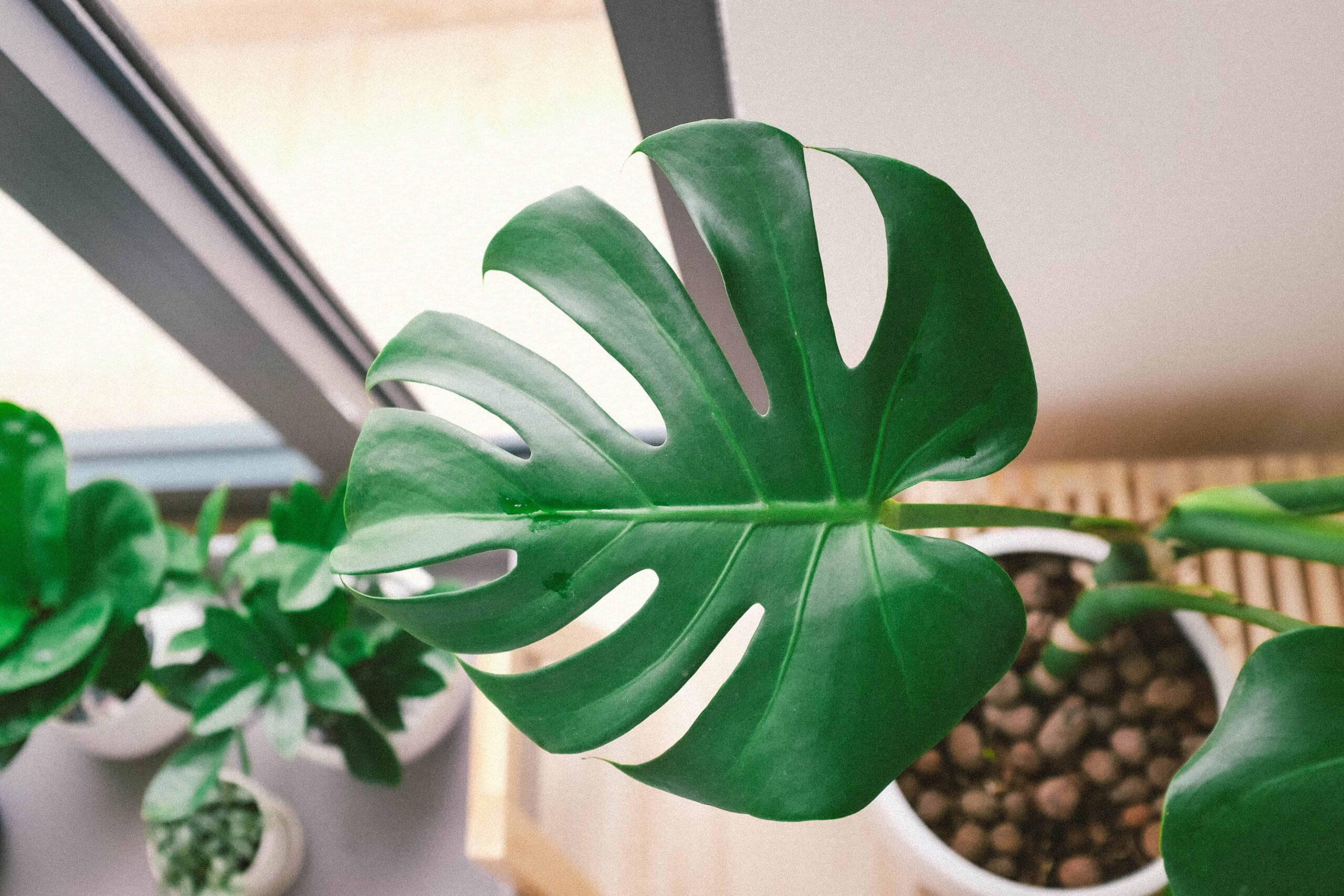
When you think of monsteras, you probably think of the characteristic leaf holes and perforations that set monsteras apart from other plants. So it can be really frustrating when your leaves won’t split!
There are usually two reasons for this.
First, your plant might be too young. Monstera deliciosa leaves typically won’t split until they’re 2-3 years old, so if you have a juvenile plant, be patient! Continue to take great care of your plant and you’ll be rewarded!
The other reason is that your plant might not be getting enough light. If your mature monstera isn’t producing perforations, move it to an area with bright, indirect sunlight, and consider supplementing with a grow light if your home doesn’t get adequate sunlight.
Read more about getting your monstera’s leaves to split here.
What does it mean if monstera leaves turn yellow?
Yellow monstera leaves can mean it’s either getting too much water, or not enough nutrients.

Yellow leaves can also mean a few different things. If your leaves are turning yellow, there’s a good chance you’re over-watering your monstera. Make sure your plant gets plenty of indirect sunlight so the soil can dry efficiently and make sure the top few inches of soil are dry before you water.
Your monstera might also be deficient in nutrients, so now’s a good time to add a liquid fertilizer to your care routine. We love Monstera Plant Food because it’s designed to be used with every watering, so you don’t have to remember a fertilizing schedule!
Why are there dark brown spots on my monstera leaves?
Dark brown spots on monstera leaves is a good indication of the plant getting too much water.
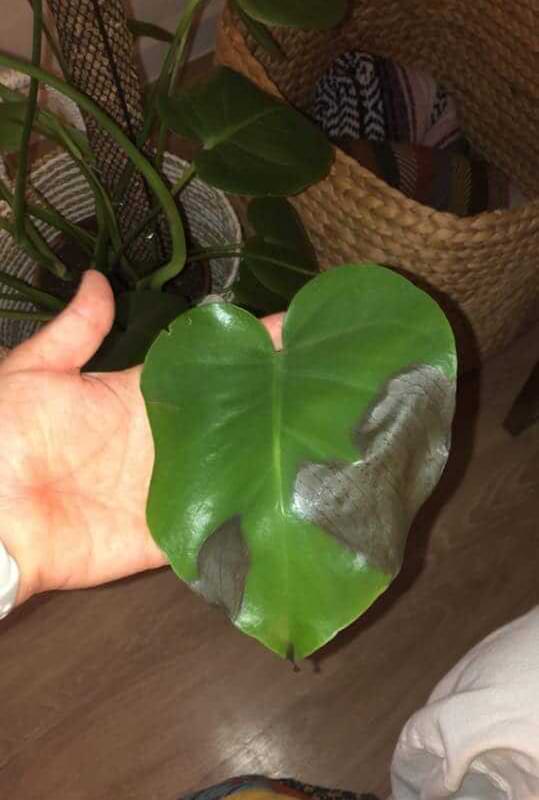
If you notice dark brown spots on your monstera leaves, this might indicate that your plant’s roots are rotting due to over-watering. (For more info, read 4 Signs Your Monstera Is Over-Watered here.)
Carefully remove your plant from the pot and using clean, sharp pruning shears, trim off any roots that look brown or mushy. Clear away as much of the old, wet soil from the root ball as you can and repot into a clean pot (either a new one or the old one that you’ve cleaned out) with fresh, dry soil.
Make sure your monstera gets excellent light and go easier on the watering while the plant recovers. You can also prune off the damaged leaves.
To prevent root rot, make sure the soil feels dry before you water, and consider getting a moister meter like this one to test the moisture level of the root ball before you water.
What do light brown spots with crispy edges on monstera leaves mean?
Light brown spots and crispy edges on monstera leaves means the monstera needs more water.

If the edges of your monstera turn a light brown color and get “crispy,” your plant might be thirsty! If the soil feels dry, give it a drink and consider watering a little more than usual. You can trim off the dead edges, because they won’t heal.
Also, make sure that your monstera isn’t in direct sunlight because this can scorch the leaves! If you notice the sunlight directly hitting your leaves, move your monstera a little deeper into the room or into a better spot altogether.
Why is my monstera drooping?
A drooping monstera can mean it needs more water or more light.
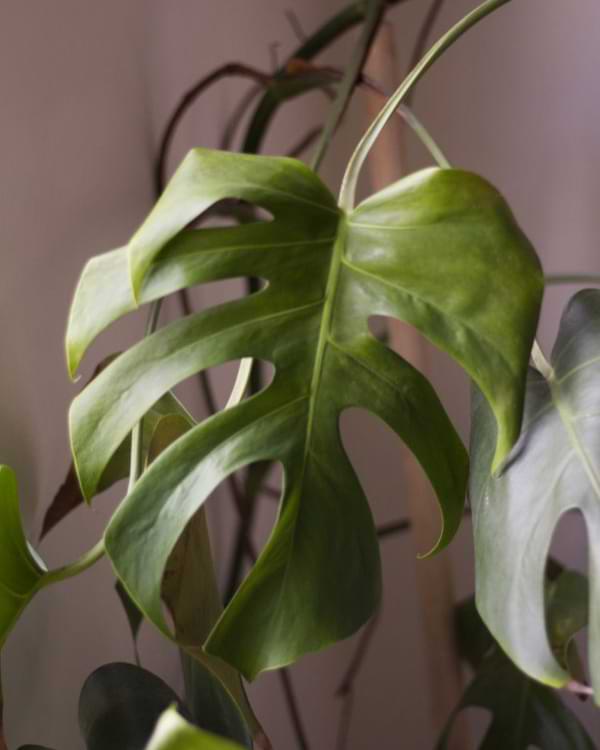
Drooping monstera leaves is another one of those signs that could mean a few different things. In this case, your monstera might be over- or under-watered.
To tell which it is, check the soil! If the soil feels dry, your plant probably needs a drink. If it feels wet, give your plant a chance to dry out before you water it again, and make sure it gets plenty of indirect sunlight so it can actually do that. If you notice your soil stays wet for a long time, consider repotting into a pot with better drainage and a faster-draining soil.
If the soil seems okay and watering doesn’t seem to be the issue, your monstera might want more light. (For more info, read 4 Signs Your Monstera Needs More Light here.)
Watering is usually the trickiest part of caring for any plant, so read our guide on watering your monstera here.
It takes practice!
Learning to read your plant can take some practice, so be patient! This is a guide to what these signs generally mean, but you’re the best expert on what your plant needs. If you notice a problem, start by doing a few things:
Check the soil. If it’s very wet or very dry several days after you water, you might need to adjust the light, the amount of water you give it, or your drainage.
Check your light situation. Light should be bright and indirect. Your monstera should never cast a shadow.
When was the last time you fertilized? If you aren’t sure or if it was long ago, your plant might be undernourished. Especially if it’s spring or summer when your plant wants to grow. Read about the best fertilizer for your monstera here.
Check for insects. Read our article How to Get Insects OFF Your Monstera here, and consider our Houseplant Leaf Armor to protect your plant’s leaves from insects as well as bacteria and fungus. (It also helps your plant retain moisture and cleans and adds shine to its leaves.)
Make sure your plant isn’t bursting from its pot. This can lead to watering issues and undernourishment.
If all those things are good, you’ll get a healthy plant!
To learn more:
- Sign up for our free Ultimate Monstera Webinar.
- Subscribe to our newsletter.
- Click to join our community on Facebook: Monstera Plant Resource Group.
- Read our Ultimate Monstera Watering Guide here.
- Be sure to grab your essentials here: Monstera Plant Food, 3-in-1 Moisture Meter, Premium Potting Soil, Houseplant Leaf Armor (which protects your houseplant from bacteria, fungus, and insects—and also cleans and adds shine to its leaves!)
- Looking to shop for plants online? Our trusted partners at Houseplantshop.com grow high-quality plants here in California and ship directly to you. Shop online now!


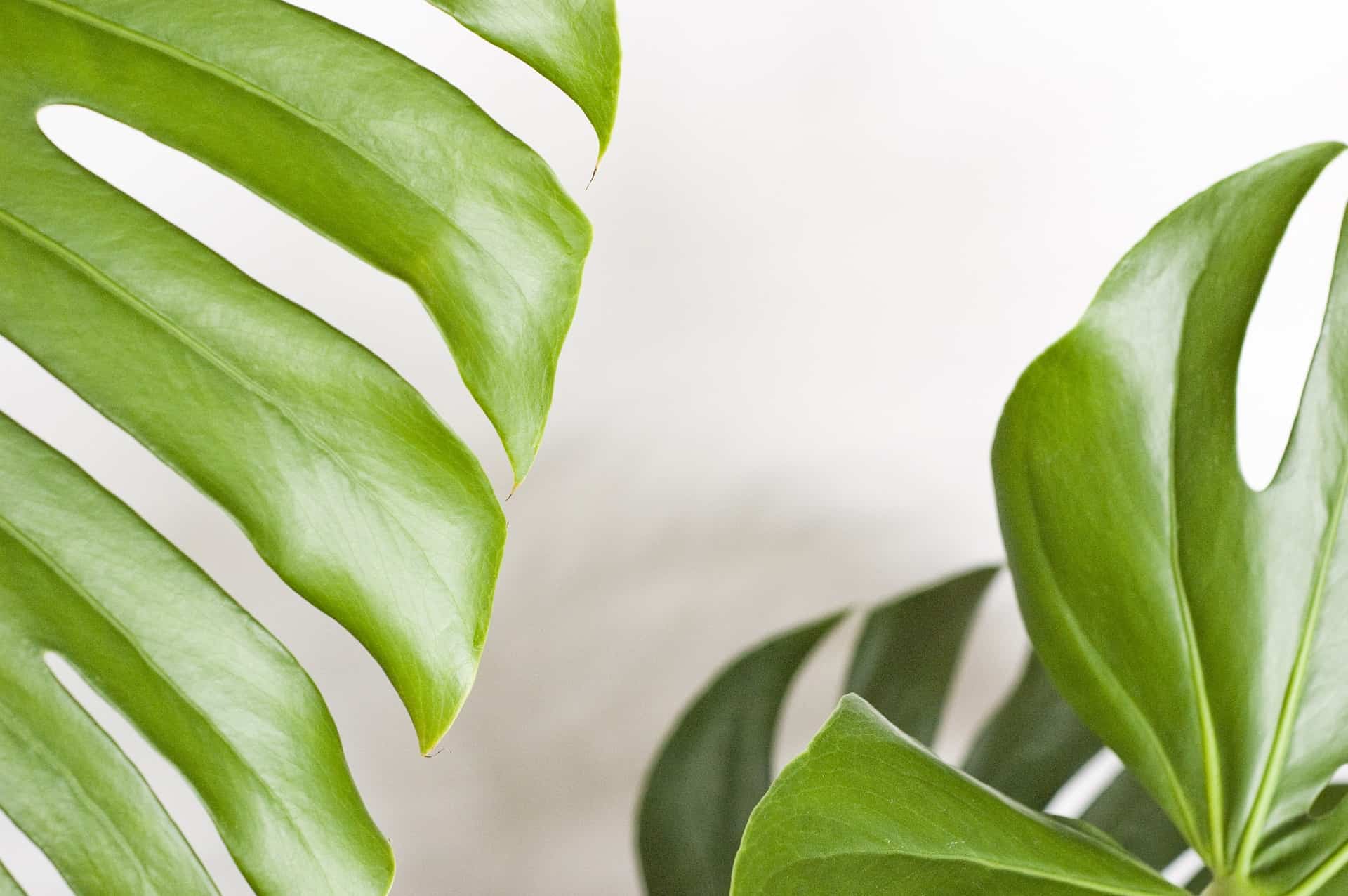




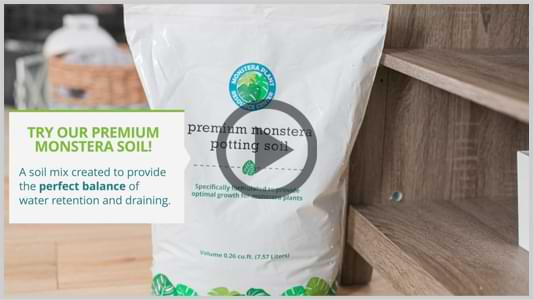
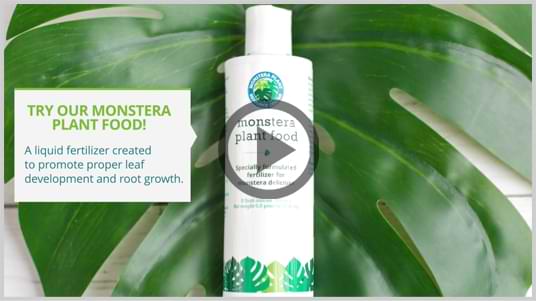
Leave A Comment